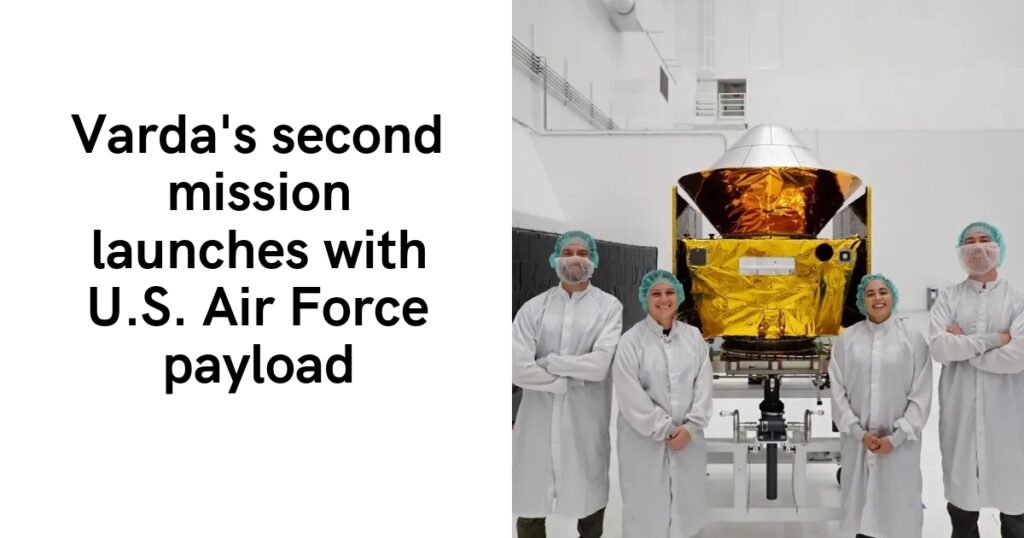WASHINGTON — Among the payloads launched aboard SpaceX’s Transporter-12 rideshare mission Jan. 14 was a Varda Space capsule carrying an Air Force Research Laboratory (AFRL) payload, marking a milestone for military hypersonic vehicle testing and commercial space capabilities.
The mission, designated W-2, is the second by California-based Varda Space Industries and the first under a multi-year agreement with AFRL. The payload is known as OSPREE (Optical Sensing of Plasmas in the Reentry Environment), a spectrometer designed to collect atmospheric data during the capsule’s high-speed descent. The information will help refine thermal protection systems, sensor designs, and aerodynamics for hypersonic vehicles.
The development of military hypersonic vehicles traditionally relies on costly flight tests, often exceeding $100 million per launch. Varda’s approach offers a lower-cost alternative by leveraging its factory-in-orbit spacecraft and reentry capsule technology. These capsules mimic hypersonic conditions as they plunge into Earth’s atmosphere at speeds around Mach 25 (18,000 mph).
“By partnering with the commercial space industry, AFRL can provide the government with a novel, low-cost approach to iterative development,” said Erin Vaughan, an AFRL program official.
Varda, founded in 2020, specializes in developing spacecraft capable of manufacturing high-value materials like pharmaceuticals in zero gravity. The company also designs advanced reentry capsules, integrating NASA-derived thermal protection technologies to ensure safe atmospheric reentry.
In 2023, Varda secured $60 million in government and private funding to test its reentry capsules for Air Force applications. This was followed by a $48 million, four-year contract with AFRL in 2024 to support flights on W-Series capsules for hypersonic testing.
AFRL’s OSPREE spectrometer will record optical emissions from the plasma generated during the capsule’s descent. This real-time data provides critical insights into how materials and systems behave under extreme hypersonic conditions, enhancing both defense and commercial reentry technologies.
“The deeper our understanding of the reentry environment, the faster we can advance defense capabilities while also paving the way for commercial space applications,” said Will Bruey, Varda’s CEO. “As the orbital economy grows, reentry will become as common as launch.”
The W-2 capsule launched on SpaceX’s Transporter-12 mission, which lifted off from Vandenberg Space Force Base in California. The Falcon 9 rocket carried 131 satellites to sun synchronous orbit, including Earth observation platforms from companies like Planet, Satellogic, HEO Robotics, Unseenlabs and others.
The W-2 capsule, integrated with a Rocket Lab Pioneer satellite bus, will remain in orbit for several weeks before making its descent at the Koonibba Test Range in South Australia, operated by Southern Launch. The W-1 capsule, the company’s first mission, landed in Utah in February 2024.



